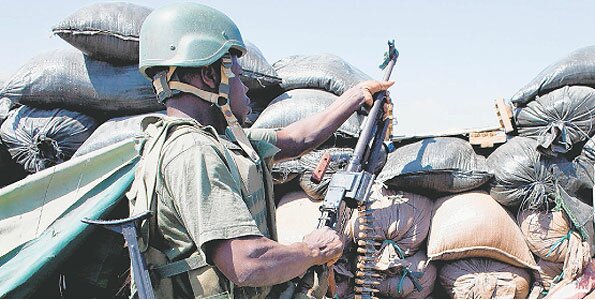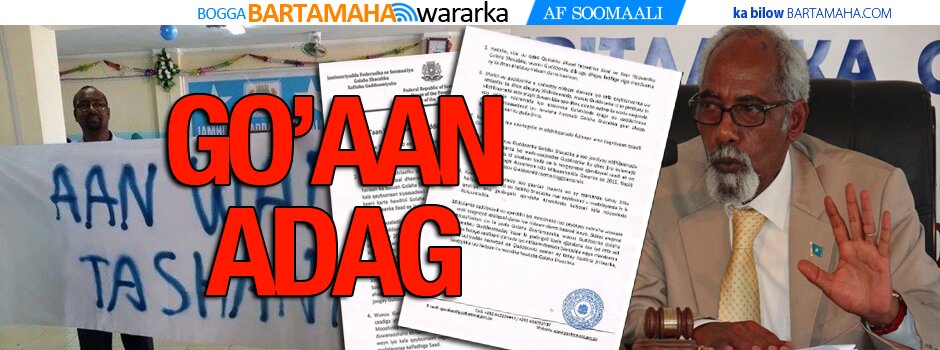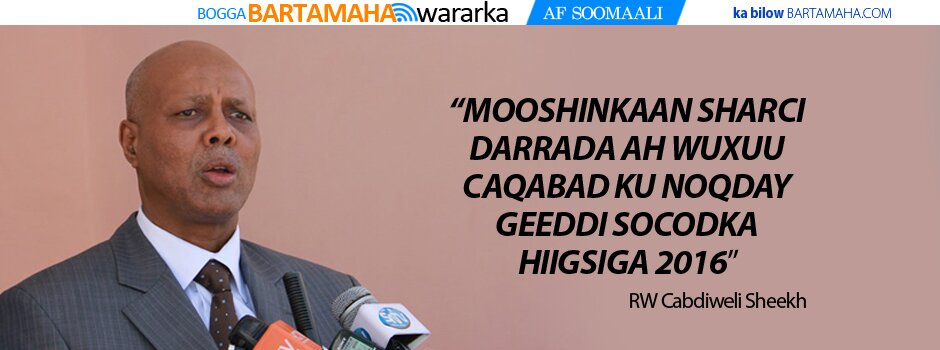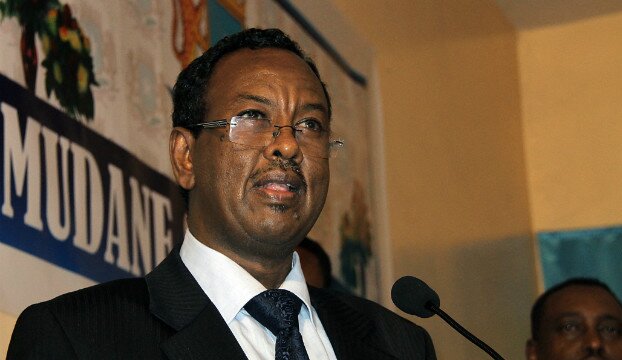Kenya wants Amisom upgraded to UN Mission

Bartamaha (Nairobi):-In the past six months, fighters of the Somali terrorist network Harakat Al Shabaab al-Mujahideen, have made six incursions across the Kenyan border into Liboi, a hamlet located 150 kilometres east of Garissa, a major town in North Eastern Province.
According to sources, these incursions were repulsed by Kenya’s General Service Unit, a paramilitary wing of the Kenya Police that is noted for its highly trained officers and special forces commandos — some of them part of the presidential guard — who have been mobilised to beef up the country’s border monitoring.
While these events have been too scattershot to attract media attention and national debate, they are beginning to worry the Kenyan and American intelligence community over what is emerging as a major threat to regional security.
Kenya is increasingly coming under pressure to police the 900-kilometre border it shares with its broken northern neighbour, prosecute its pirates and still bear the burden of giving a home to 500,000 refugees and an estimated 1.5 million illegal immigrants from Somalia.
It is also estimated 3,000 Somalis cross into Kenya every day. There are already an estimated 2 million Somalis in Kenya in a country of 40 million.
Territorial ambitions
Al Shabaab’s increasingly militant stance with the help of Al Qaeda has also been worrying Kenya’s security agencies and the government.
Over the long run, with Kenya planning $15 billion project to open up Southern Sudan and Ethiopia links to Lamu, and the increasing exploration activity in the north that has raised the prospects of a big gas discovery, the profile of the Al Qaeda threat becomes more pronounced, given its stated territorial ambitions and belligerent pronouncements about waging jihad against Kenya.
Last week, in a bold strategic response to the escalating security, Kenya’s President Kibaki announced what is likely to become a diplomatic initiative that could reshape the conflict in Somalia.
Thus, three months after the release of a report by the UN Monitoring Group on Somalia to the United Nations Security Council that outlined how Kenya was becoming the hub of Al Shabaab’s growing global franchise, Nairobi is developing a new Somalia policy that hopes to bring the conflict to an end.
This policy involves calling on the Security Council to upgrade the African Union peacekeeping mission in Somalia to an active and fully funded UN-led mission. This new mission, which will be expanded from the current 8,000 troops to the UN standard 20,000 will not just keep the peace, but also have an expanded mandate of actively seeking to enforce a ceasefire.
This is already envisaged in UN Resolution 1863 of 2009 and it is a position that Uganda’s — which is leading the peacekeeping mission in Somalia —has now called for; Tanzania is also coming around to it because of East African Community countries’ shared national security threat from Al Qaeda, whether on their sea lanes or in their homelands.
This will become the third hybrid mission that will see a commander not just reacting only when his soldiers are shot at, but actively engaging in combat to create an atmosphere where humanitarian relief operations and state building can happen.
Kenya also wants this mission to particularly restore peace from the southern part of Somalia, on its northern border and establish the Transitional Federal Government, whose mandate is expiring July next year, firmly in place.
Last week, President Kibaki seized the initiative to shape the dialogue around US Vice President’s visit to Kenya around the question of Somalia‹as opposed to simply waiting for lectures on governance, asking America to take diplomatic leadership to convince the five permanent members of the Security Council who are US, Russia, China, France and Britain to give teeth Resolution 1863.
According to sources, the US State Department nor President Barack Obama’s White House has not shown much enthusiasm to support Kenya’s new Somalia policy‹which has the backing of some sections of America’s intelligence community–which is already making its way through the formal diplomatic channels.
The slow response is largely out of the fact that Obama does not as yet have a concrete Somalia policy of his own, and the political costs that could be involved in pushing Kenya’s proposal at P5, while the US is overextended dealing with Iran and North Korea.
Kenya, with its “Look East†policy that engages China, Japan and India in economic diplomacy, last week it made it clear to the US that the Somalia question will now become the defining issue in its engagement with Americans.
In the latest Department of Defense Quadrennial Defense Review Report of February 2010 that outlines threats and priority responses to American national security, the situation in Somalia only merits one mention and Al Shabaab is not even mentioned.
This means that Kenya is attempting to upgrade what Americans consider a low priority threat to the top of the agenda.
Kenya’s Somalia policy
AMISOM to UNISOM: Transform AMISOM into a 20,000 strong UN Hybrid mission.
Peace enforcement: Give
mission commander mandate to fight Al Shabaab when need to to enforce peace.
TFG: Support TFG to rule Somali with sole power over use of force with its borders, particular in Southern regions like Juba.
State building: Somali needs a civil service, professional army and police, hospitals, school and a modern curriculum.
America’s role: The US should not fight on the ground, but provide diplomatic leadership among Security Council members to end conflict.
———
Source:- theeastafrican.co.ke
Comments
comments
 Calendar
Calendar





































